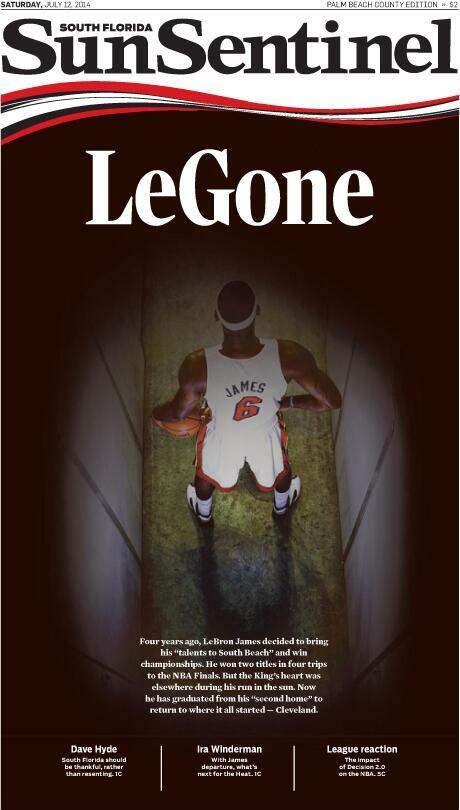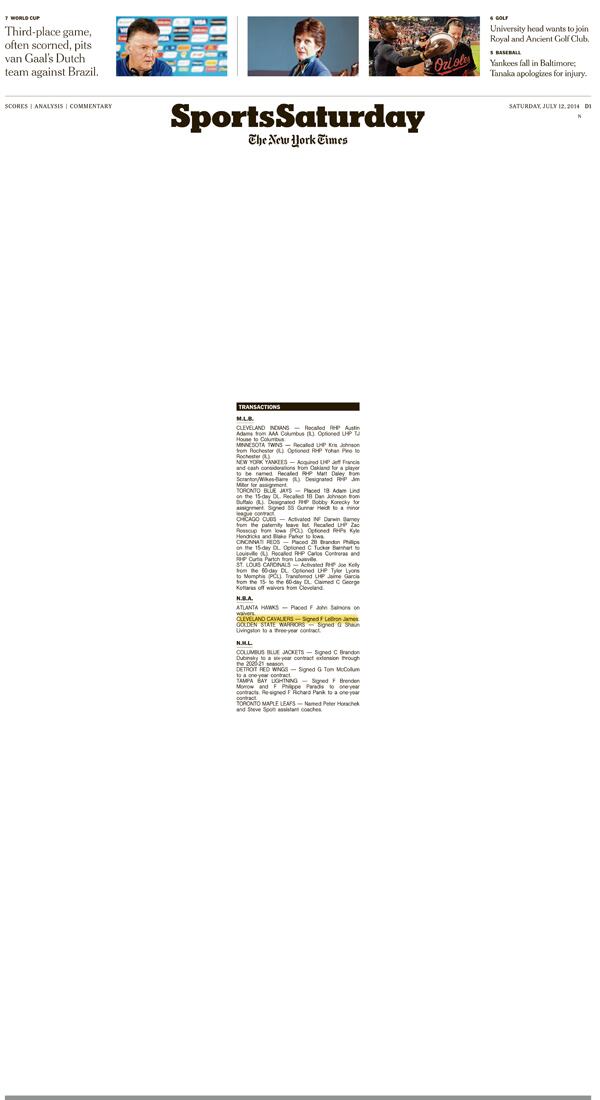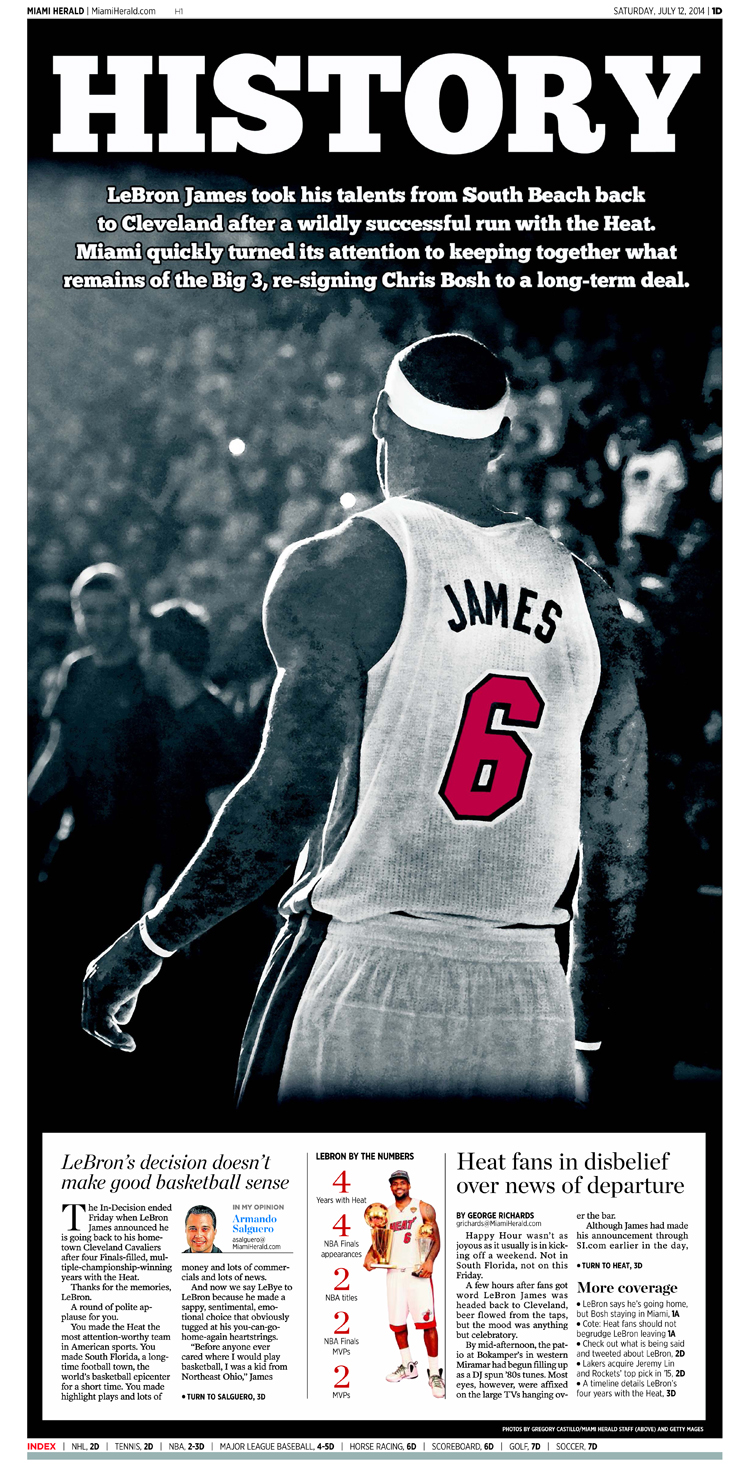This is the weekend edition of TheMarioBlog and will be updated as needed. The next blog post is Monday, July 14
Update 1: New York City, Saturday, July 12; 8:40
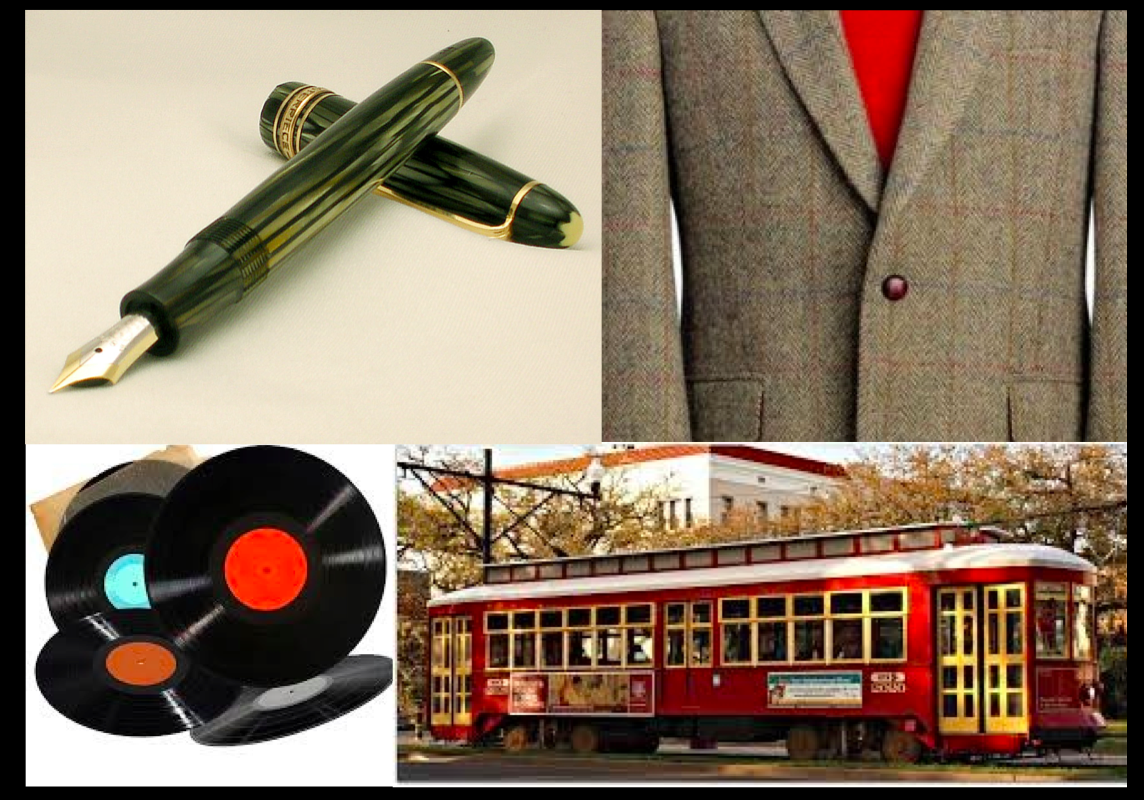
If you thought these items were “artifacts” of another era, think again: they are back! But, did they ever leave?
I like to read stories like the one in my favorite magazine—The Economist. In its June 14 edition, The Economist includes a commentary headlined Second Wind.
Quite appropriate headline, I may add, since a Second Wind is, indeed, what many editors and publishers that I work with would like for the printed newspaper to get. But, before we get to newspapers, and what they should be re-energized to perform the tasks that 21st century audiences would expect from them, let me quote you some parts of the Economist's piece.
In essence, the article reminds us of a series of products and things that were close to disappearing, only to return with some degree of robustness, not only to survive, but to thrive and to remind us of the glory that once was.
Among things that refuse to go away: Swiss mechanical watches that must be manually winded, Montblanc fountain pens, Harris Tweed jackets, Folio Society books and old fashioned sailing boats. Also, streetcars or trans–which are such an iconic part of cities like San Francisco and New Orleans (two cities I have visited in the past months where trans continue to criss cross from side to side), but also in 30 more American cities where they never existed but now are introduced. In fact, trans are returning to two cities that had gotten rid of them long ago: Detroit and Los Angeles.
Sales of vinyl LP's in the US have increased from almost nothing in 1993 to close to 6 million.
The notion that there everything new may have been reinvented is at work in all of these examples.
How does one stage a product’s revival?
So, the question is, how does one go about the business of reviving old technologies in the face of innovation? Ryan Raffaelli, of the Harvard Business School says that it must be by redefining the products' value and meaning. I would add that it is the product's new value and meaning that need to be analyzed and rethought.
That, I may add, is a process in which I normally engage my clients and not just newspapers. In the case of newspapers, the idea is not to see ourselves as guardians of legacy, but as instruments of change. If we truly “romance” newspapers, as many profess, then we must push that legacy into the next chapter.
A stitch in time
Funny that I read this piece the same week that the top manager of a company that devotes itself exclusively to manufacture of “stitches” to keep the pages of printed newspapers together wrote me to lament the state of the print business and thus his own business. The manager wrote me that the picture did not look for print.
Then I was in the Lufthansa lounge in Frankfurt waiting for my flight home when a man near me grabbed a copy of The Wall Street Journal Europe, which came apart with various pages falling out of his reach and onto the floor. He seemed slightly aggravated.
This was not a good print experience. Of course, I advocate for stitching, but I am a stronger advocate of PRINT staying, and not reminding users of what a nuisance the experience of reading a newspaper could be.
Not that stitching alone will bring back a moribund print product that is stuck in a before-1991 era of seeing the newspaper as still the primary provider of news and information.
Wanted: real disruption
Swiss watches rethought themselves as status goods and not just as items that tell time. Disruption helped that industry to re assess its product and place it in front of the consumer in a different light.
The printed newspaper may do something like that, too, although it probably will not be doing it daily. Try a weekend product where our disruption would be that of appearing as a medium that is crafted differently, that removes you from digital connections to offer you a more meditative type of connectivity, that takes you on a journey where concentration and relaxation are the key.One phrase that The Economist piece includes resonated with me:
Sometimes the best way forward is backwards.
It is all about how we mix the romancing of tradition with the realities and demands of change. It can be accomplished.
For newspapers, more than for Swiss watches, fountain pens, tweed jackets and trans, this is not going to be an easy proposition, but one that merits attention
I often say that we need to do print happily–redefining the role the newspaper plays in the midst of the media quartet.
The Economist piece does too, insisting that companies that succeed in reinventing themselves do so “cheerfully”.
Of very related content
Here are some takeaways from the reently completed WAN IFRA 2014 Congress in Turin, Italy:
Embracing disruption: Congress takeaways
My primary takeaways from the Congress sessions in Turin: constant innovation (“think like a startup”), collaboration (“why go it alone?”), mobile, mobile, mobile, leveraging technology, and data.
“If you don’t start every day by thinking about your digital journey, you are in deep trouble,” said George Nimeh, Chief Digital Officer for Kurier in Austria.
Blending tech, content and development
“Technology alone is not the future; it’s the meaning, enhancement and perception of that technology that will define your success,” said Nicolas Henchoz, Director of EPFL + ECAL Lab in Switzerland.
Collaboration
“The media industry will prosper when collaboration is as natural as competition,” said Benoît Sillard, CEO of CCM Benchmark Group in France.
Whether it be mobile, video, analytics, the upcoming onslaught of wearables, etc., it’s obvious that collaboration and partnerships are a key part of any publisher’s digital strategy, particularly when going up against goliaths and especially if you are a smaller
publisher.
Being mobile ready
And partnerships are all that matter when it comes to mobile, according to John Paton, CEO of Digital First Media in the USA.
“You have to focus on what you do best – and if you are not a mobile company, you are not the best. Without partnering, I don’t know how you can do mobile best. The demand for mobile is immense at the moment, but mobile app development talent is scarce. So partnering with an expert is the best route. And I don’t mean outsourcing, I mean true partnerships.”
Pages and concepts we like
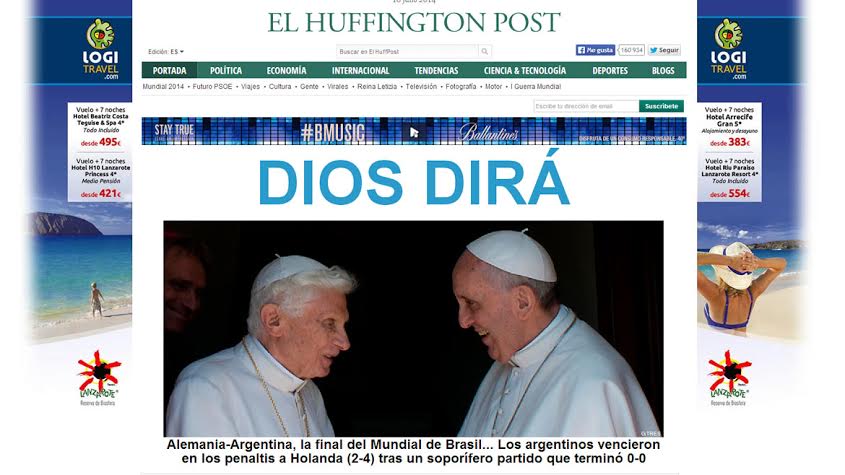

We have seen many creative treatments of pages and screens coming out of the World Cup 2014.
Here are two that hit the spot, and I am sure were crowd pleasers: Holland's nrc”s front page, lamenting the loss of the Dutch team to Argentina, therefore losing any hope of taking home the trophy.
Clever use of photo and headline for the Spanish edition of Huffington Post with this photo of the former and the current Popes–from Germany and Argentina respectively. The headline Dios Dira means (God will tell), as Argentina and Germany face off for the final of the World Cup 2014.
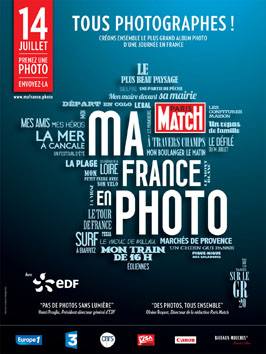
The latest issue of France's Paris Match, a special edition in which editor Olivier Royant asked readers to send photos of “their France” in celebration of Bastille Day.
The Facebook page to capture comments about what Paris Match calls “the best photo album of France”:
http://www.facebook.com/parismatch.fr
End of an era for Miami Heat
So the great Lebron James returns to Cleveland. Miami Heat fans very sad. Cleveland fans elated (some), and, well, the newspapers are having great fun with the sports story of the year!!!! Here are some front pages to enjoy.
